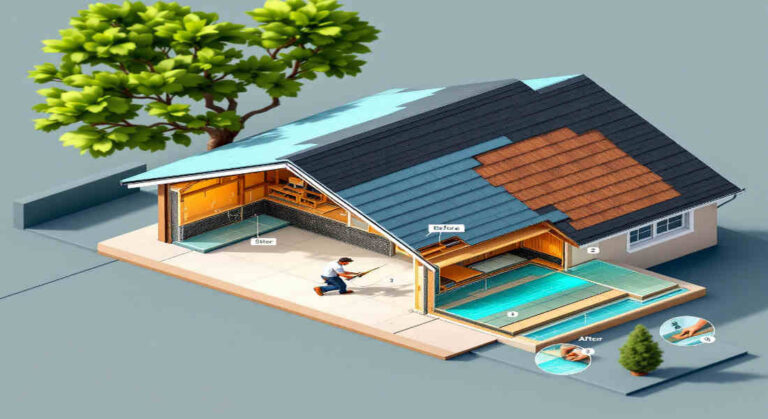A leaking garage roof can cause a world of trouble for homeowners. Not only does it compromise the safety of your belongings stored inside, but it can also lead to structural damage, mould growth, and costly repairs. Thankfully, fixing a leaking garage roof doesn’t have to be overwhelming. With the right approach, tools, and some know-how, you can tackle this task effectively and protect your home.
Why Fixing a Leaking Garage Roof is Essential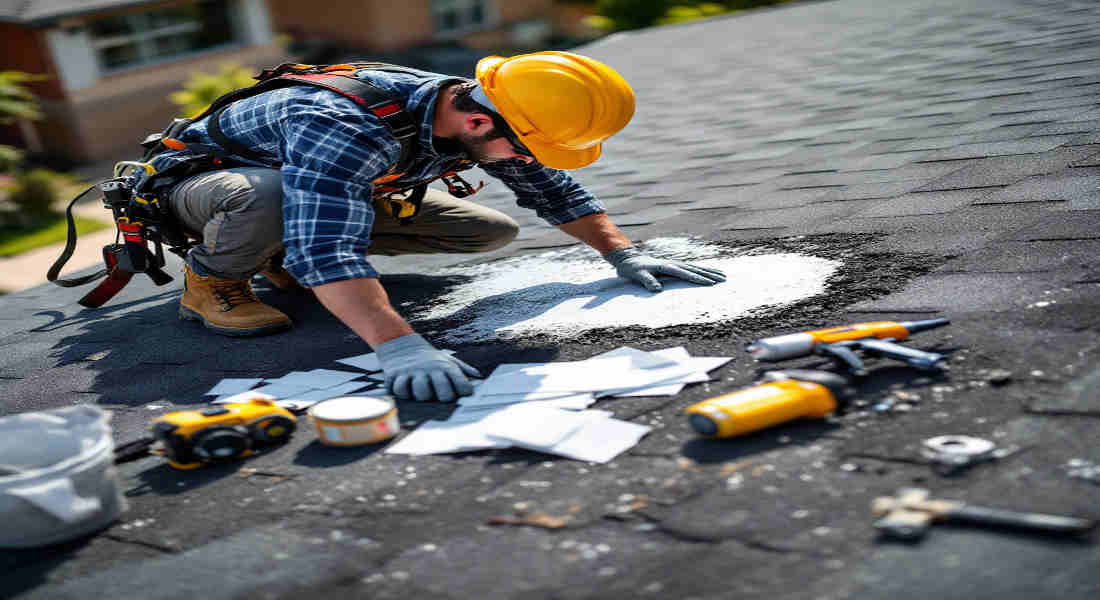
A leak-free garage roof is not just about keeping your car and tools dry. It’s about maintaining the integrity of your entire property. A leaking roof can lead to:
- Water damage: Water can seep into walls, floors, and other areas, causing rot and structural damage.
- Mould and mildew growth: Excess moisture creates an environment where mould thrives, which can harm your health.
- Decreased property value: A visibly damaged or leaking garage roof can detract from your home’s curb appeal and resale value.
By addressing leaks promptly, you’ll save yourself money, time, and stress in the long run.
Understanding the Problem: Why Your Garage Roof Leaks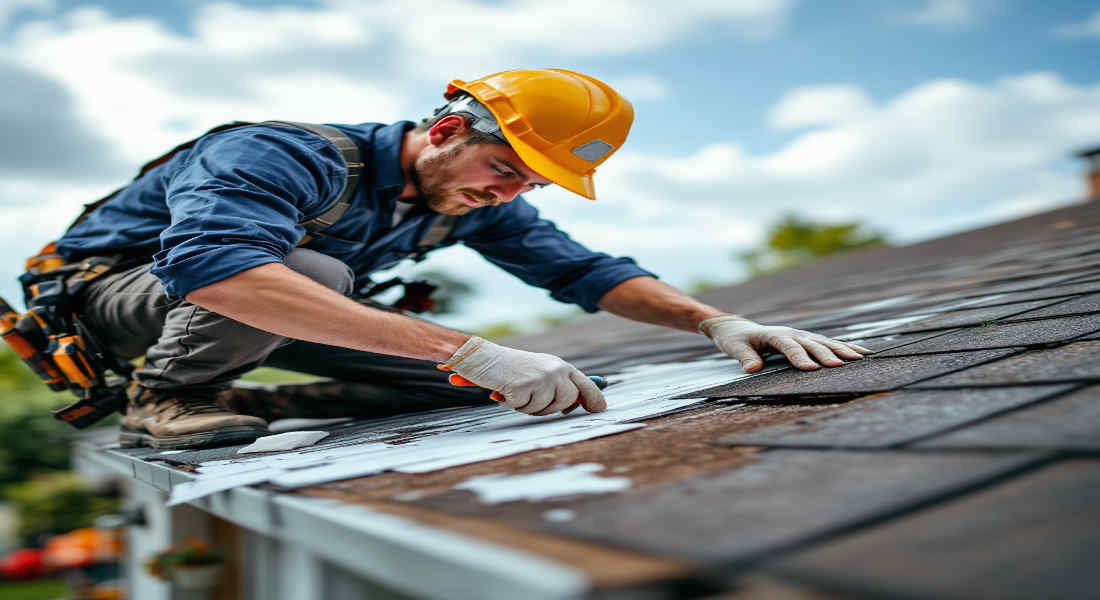
Before diving into repairs, it’s essential to understand the root causes of a leaking garage roof. Here’s what you need to know:
Common Causes of Garage Roof Leaks
- Damaged shingles or tiles: Cracks, curling, or missing shingles leave areas exposed to water.
- Clogged gutters: Blocked gutters can cause water to pool and seep into the roof’s surface.
- Worn seams: Over time, the seams between roofing materials may degrade, causing leaks.
- Moss or algae growth: Plants growing on your roof can trap moisture and weaken the surface.
- Age of the roof: Older roofs naturally deteriorate and lose their waterproofing capabilities.
Types of Garage Roofs and Leak Variations
The type of garage roof you have determines how leaks might occur.
- Flat roofs are often prone to pooling water and cracks in the membrane.
- Corrugated metal roofs: Susceptible to rust and loose screws over time.
- Asphalt shingle roofs: Cracks or missing shingles are common sources of leaks.
Signs of a Leaking Garage Roof
If you suspect your garage roof is leaking, look for these indicators:
- Water stains: Brown or yellowish stains on the ceiling or walls.
- Mould or mildew: Visible growth or a musty odour inside your garage.
- Sagging beams: Pooling water may weaken the structural integrity of the roof.
- Dripping water: Obvious water leaks during rainstorms.
Preparing for the Repair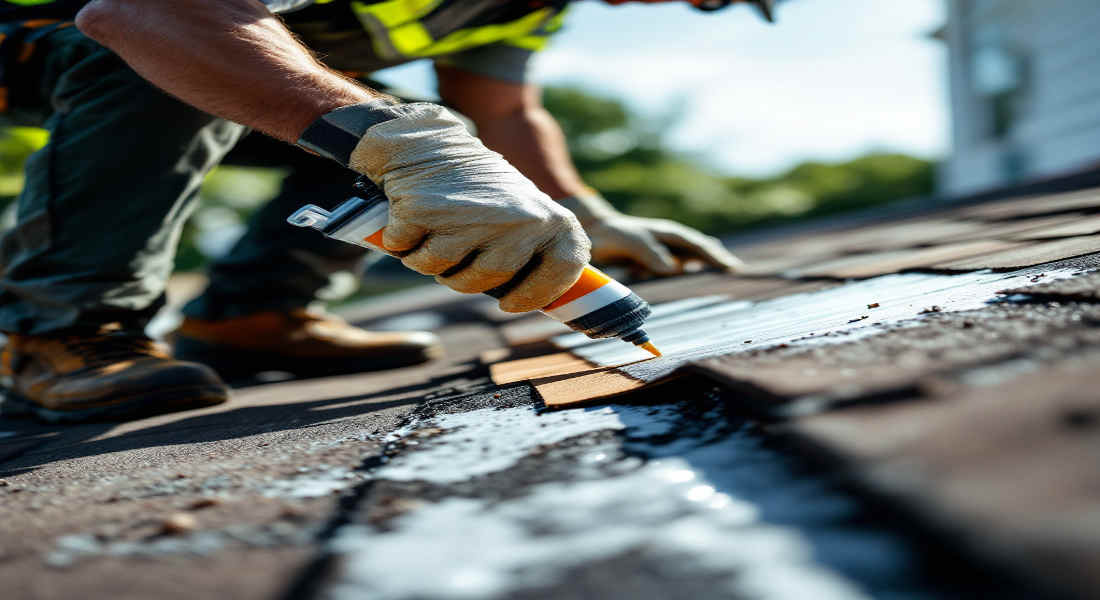
Proper preparation is crucial before starting your roof repair project. Let’s break it down into manageable steps.
You may also read (are house prices really falling in wales).
Safety First: Essential Gear and Precautions
Working on a roof can be risky. Make sure you have:
- A sturdy ladder with non-slip feet.
- Gloves to protect your hands.
- Safety glasses to guard against debris.
- Non-slip shoes for better grip on the roof.
Always avoid working on the roof during wet or windy conditions.
Clear the Garage
Before starting repairs, remove any valuable or sensitive items from the garage. This will protect them from accidental damage during the repair process.
Tools and Materials Checklist
Here’s what you’ll need to fix a leaking garage roof:
- Ladder
- Broom or leaf blower
- Paint scraper
- Roofing cement
- Mesh scrim (for larger cracks)
- Roof coating
- Fabric felt
- Brass screws and nails
Having everything ready beforehand will save time and ensure a smoother process.
Step-by-Step Guide: How to Fix a Leaking Home Garage Roof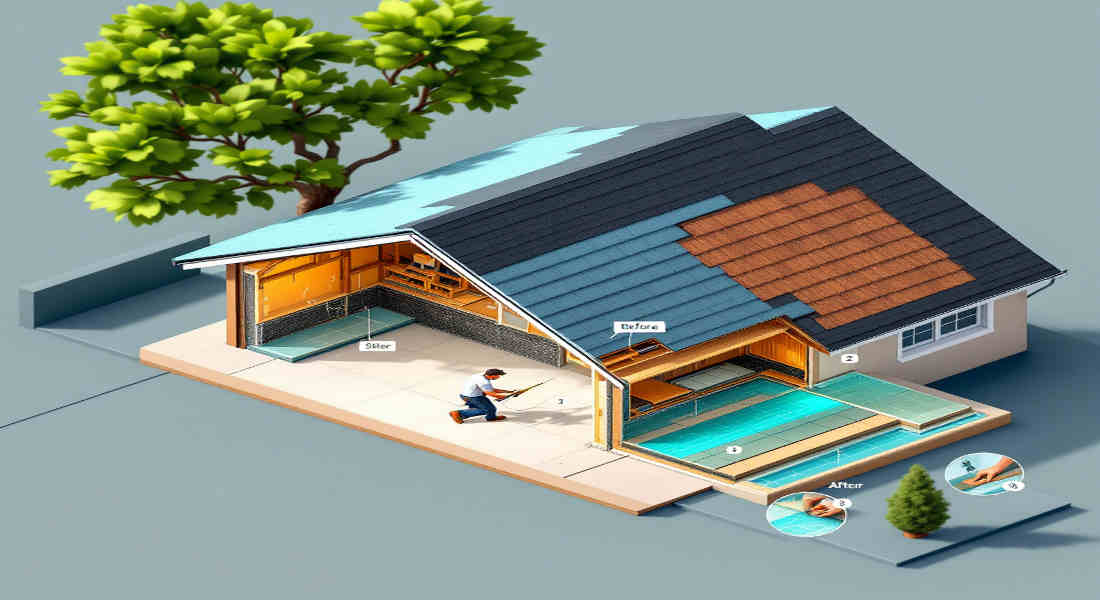
Now that you’re prepared, let’s get started with the actual repair process.
Inspection and Leak Identification
- Inspect the roof safely: Use your ladder to examine the roof’s surface, seams, and edges.
- Locate the leak source: Pour water over the roof and watch for areas where it seeps through inside the garage. Mark the spot with chalk for easy reference.
Cleaning the Roof Surface
A clean roof is essential for effective repairs.
- Sweep away debris, leaves, and dirt with a broom or leaf blower.
- Remove moss and mould using a mix of water and mild detergent.
- Use a paint scraper to clear any loose material around cracks.
Repairing Small Leaks
For minor cracks or holes:
- Apply a generous amount of roofing cement directly to the damaged area.
- Smooth it out with a putty knife to ensure complete coverage.
- Allow it to dry according to the product instructions.
Repairing Larger Leaks (Up to 10mm)
When dealing with more significant damage:
- Place a layer of mesh scrim over the crack for reinforcement.
- Apply roofing cement generously over the scrim.
- Add a second layer of cement once the first coat dries for enhanced durability.
Structural Repairs (If Necessary)
If your roof has sagging beams:
- Reinforce the beams using cross-timbers and secure them with brass screws.
- Ensure the new supports are at a level to prevent further sagging.
Finishing Touches
- Add a layer of fabric felt to enhance waterproofing.
- Inspect seams, overlaps, and gutters to ensure no gaps remain.
- Optionally, apply a waterproof sealant to cover the entire roof for added protection.
Maintenance Tips to Prevent Future Leaks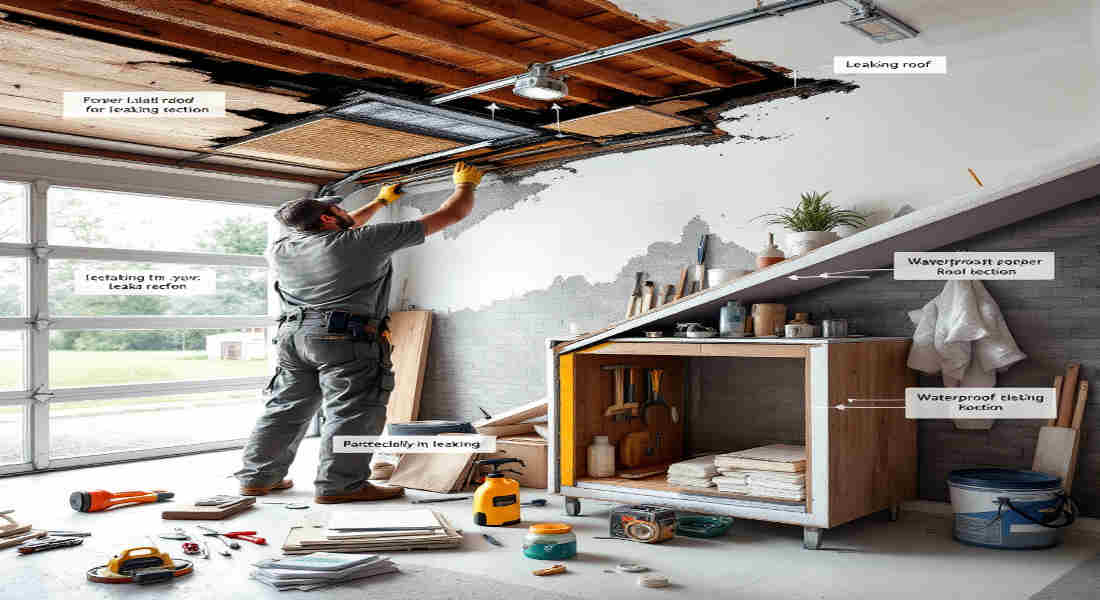
Prevention is better than cure. Follow these maintenance tips to keep your garage roof leak-free:
- Clean gutters regularly: Remove leaves and debris to prevent water pooling.
- Inspect the roof seasonally: Look for cracks, loose screws, or worn areas.
- Trim nearby trees: Prevent branches from falling and damaging the roof.
- Remove moss promptly: Use a moss remover or scrub it away with water and detergent.
When to Call a Professional
Sometimes, DIY repairs aren’t enough. Here’s when you should consider hiring a professional:
- Extensive damage: If more than 25% of the roof is compromised.
- Structural issues: Sagging roofs or damaged beams require expert attention.
- Lack of proper tools: Professionals have specialised equipment and expertise.
Choosing a Reliable Roofing Contractor
Look for contractors with:
- Good reviews and references.
- Proper licensing and insurance.
- Transparent pricing and warranties.
Bonus: Upgrading Your Garage Door Alongside Roof Repairs
While fixing your roof, consider upgrading your garage door for added benefits:
- Improved energy efficiency: A well-sealed garage door reduces heat loss.
- Enhanced curb appeal: A new door can boost your home’s overall look and value.
- Better protection: Modern doors provide better insulation and weather resistance.
You may also read (home value the garage advantage).

